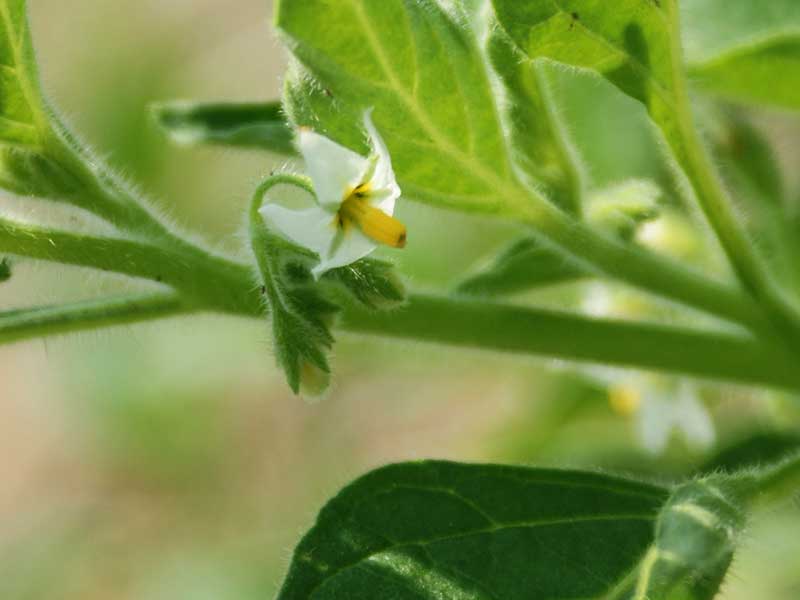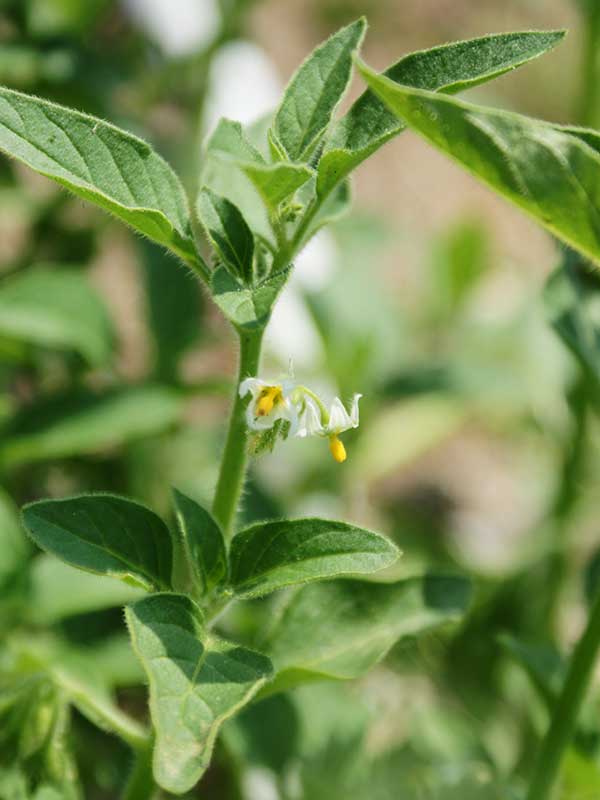Solanum physalifolium / ground cherry nightshade
- flowers look like potato or tomato flowers
- small white, 5 recurved petals
- clump of yellow stamens protrude from flower
- triangular leaves with wedge-shaped bases
- usually sprawling on ground
Also known as: hoe nightshade, Argentine nightshade, green nightshade, hairy nightshade
Ground cherry, or hairy nightshade is an annual herbaceous plant. It can be as tall as 3 feet in good, cultivated soil. It is, after all, a weed, especially in potato fields where it is a a reservoir for aphids and potato leafroll virus. It is found in other disturbed areas, however, including road sides and gardens. The plants require full sun.
The flowers of ground cherry nightshade resemble those of potatoes and tomatoes (which are in the same genus). They are borne in small clusters, mostly opposite a leaf. They are ¼ to ⅓ inches across with recurved triangular tepals that create a star-shaped look. A column of stamens with long, yellow tips protrudes from the center. All parts of the flower are covered with sticky, glandular hairs. The calyx persists after flowering and the sepals form a cup around the fruit… a berry about ⅓ inch in diameter.
As an annual, this species reproduces by seeds which begin germination in the spring but continue through the summer. Flowering begins in summer (July) and berries mature about 4 weeks later. Clearly, plants that germinate later, set fruit later, and in 2022, this continued at least to mid-October.
In form, ground cherry nightshade is a prolific brancher, usually sprawling along the ground. The leaves are limited to the branching stems; there are none at the base. The leaf arrangement is simple and alternate. The leaves are more or less triangular with wedge-shaped bases, and up to 3 inches long. The leaf margins may be toothed, or untoothed, or wavy. The stems and leaves are both covered with soft hairs, often somewhat sticky. The veins below usually have longer glandular hairs.
Ground cherry nightshade plants, and especially the berries contain toxic alkaloids, that are poisonous to cattle, sheep, pigs, ducks, and chickens.
| Blossom size | |
|---|---|
| Color | |
| Family | |
| Inflorescence size | |
| Inflorescence type | |
| When? | |
| Where? |



